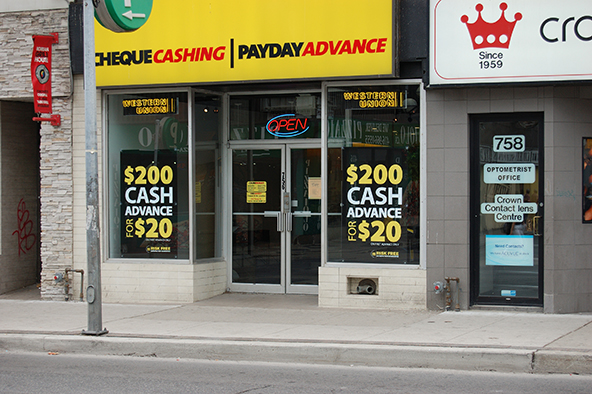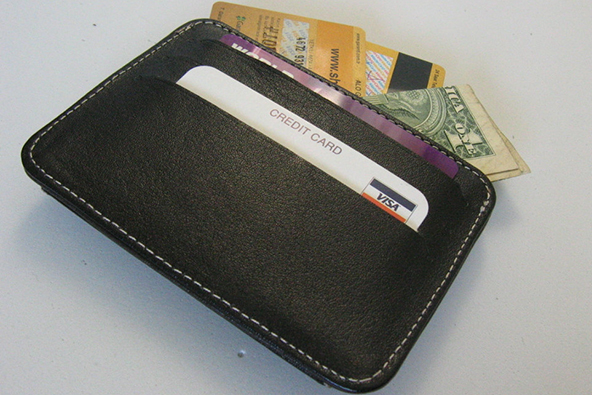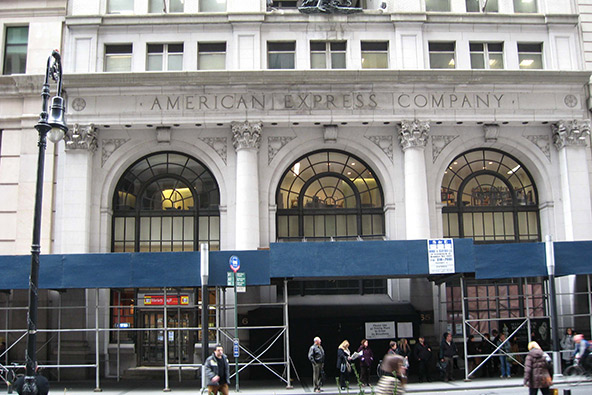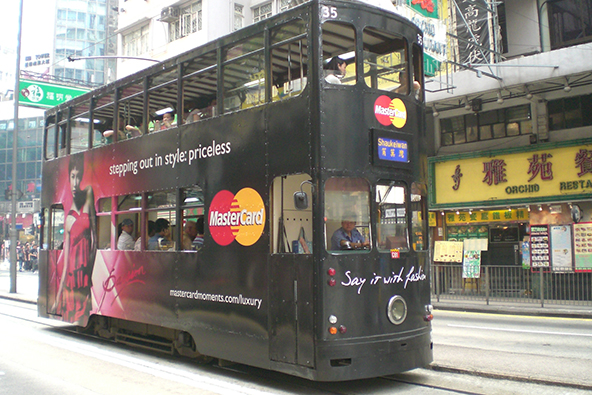Banking on the Unbanked

One of the unfortunate, though perhaps unavoidable, side effects of the way our consumer credit system is set up is that the cost of financial services is the highest for those who can least afford it. There is a strong positive correlation between a consumer’s credit score and his or her income and education level, which translates into credit being more readily and cheaply available to higher-income consumers and vice versa. And consumers on the lowest rungs of the credit score ladder are all but shut out of the system.
These so-called “unbanked” consumers are shut out of regular banking services, such as checking and savings accounts and credit and debit cards. Instead, they are left to rely primarily on prepaid cards, check-cashing and utility-payment stores for their financial needs. And these are very expensive services, even as prepaid cards are quickly becoming much better than they used to be, as issuers are trying hard to drive their customers away from debit cards.
So it is always great to see someone reaching out to the unbanked and trying to bring them back into the system. That’s exactly what PNC Bank is doing through its participation in the U.S. Department of the Treasury’s Community Financial Access Pilot (CFAP) and its efforts are producing some good results, as Baltimore Sun’s Eileen Ambrose tells us.
Educating the Unbanked
CFAP’s stated goal is to
[I]ncrease access to financial services and financial education among low- and moderate-income families and individuals, especially individuals who have no bank or credit union account.
Nearly 10 million U.S. households are unbanked, the Treasury Department tells us, so there is no shortage of potential beneficiaries of such a program. PNC is participating in the pilot with its Foundation Checking account, which the bank describes as a “starter account for those with no banking experience.” After a year using their Foundation account, successful “graduates” can move on to more traditional bank accounts. There were 25,000 active Foundation Checking accounts at the end of 2010, according to PNC, but the bank hasn’t provided data on how many of these account holders have been able to successfully “graduate.”
But Ambrose tells us the story of one such “graduate” and it’s a great one. The formerly homeless protagonist who used to be paid in cash or a check that he would take to a check-cashing store now “has checking and savings accounts at PNC and is in the process of getting a credit card.”
It Will Be a Steep Climb
I hope that PNC and the other banks participating in the CFAP will produce many more success stories, but they have their work cut out for them. There is a real need for basic financial education in the U.S. A recent paper by Fumiko Hayashi and Joanna Stavins from the Boston Fed found that:
?Ǫ38 percent of the sample did not know their FICO score. The youngest respondents, those with the lowest level of education or the lowest household income were less likely to know their score than the rest of the sample. Consumers with high education or income were more likely to know their scores.6 A much higher fraction of the unbanked did not know their score, compared to respondents with a bank account.
That says it all right there. Four out of ten Americans have no idea what their creditworthiness is! Hayashi and Stavins also find, unsurprisingly, that credit card holding increases “dramatically with education and income” and the same is true, though to a lesser extent, for debit card adoption.
The Takeaway
So we know what needs to change, in order to enable the unbanked to enter (or, in some cases, to re-enter) the financial system. But we also know that educating ten million households is just not feasible, even with the best of intentions and vastly greater resources.
Nevertheless, programs such as CFAP are needed and should be marketed much more vigorously, so that unbanked consumers who are looking for a way to get banking services and are willing to accept help, can actually learn how to do that. And even a modest progress should be applauded.
Image credit: Wikimedia Commons.



Regulators trying to protect banks from competition and troublesome consumer protection laws facilitated the global economic crisis. What they overlooked in their haste to eliminate payday loan companies was that these companies existed only because banks were not making $200 emergency loans to their depositors. Now, with competition out of the way, banks are free to prey on consumers who no longer have a better source of short-term credit. It is a case of the government stacking the deck against consumers.
People on social security and disability often choose to not open bank accounts to avoid having their money garnished by debtors. It is true that there are rules that protect consumers whose accounts only contain such funds, but a bank will not label the account as protected unless the person has already been through a garnishment and has obtained a court-issued protection for the account. The process is unnecessarily tortuous, but it is what it is.
People without banks accounts say they use check cashing services instead of banks because they have convenient neighborhood locations, longer working hours (24 / 7 is not an exception) and are open on the weekends. Given all that, I wonder what can be done to improve the situation. After all many, many previous efforts have failed rather miserably, simply because they failed to address the real needs of the real people they are supposed to be helping.
The top four services for which consumers without bank accounts use check cashing services are to actually cash paper checks, to pay a bill, send money (typically to a relative in a foreign country, often without a bank account) and to buy money orders. The first two of these services could be replaced with bank accounts at great benefit to consumers, but not the latter two. The problem is that often people simply do not want to be helped.
One of the reasons people use payday loans is the complex structure of bank account fees. And they had a good reason until recently, because of the overdraft fees. Before the recent CARD Act reforms, banks approved debit card transactions at ATMs even when they knew that they will overdraw the account, rather than declining the transactions for insufficient funds, which is what they used to do when debit cards were first introduced 35 years ago. That’s no longer the case, but the unbanked are not exactly aware of the new rules.
The only advantage that my bank account has to offer is the automatic check deposit. Anything else they may say they offer, they can keep it. I have opted out of overdraft, because I cannot afford the $35 charge and anyway, I don’t see the point of it. After all, if there are not enough funds in my account to allow me to pay with my debit card, I can use another card. So if you are not careful, bank accounts are not all that better that payday loans.
All we need here is some education. The unbanked can always cash a check at no charge at the bank that underwrote it. In most cases all they require is a driver’s license or 2 other forms of ID. I am fairly convinced that most people using check cashing companies don’t know this, and I’m sure that some banks try to make it as frustrating as possible because they don’t like cashing checks for non-customers.
Sorry Mary, you are ignorant. There is no bank that doesn’t keep a percentage of all cashed checks of their own. I don’t know a state in the US that has any regulation to prevent banks from doing that (Florida and Texas were the last 2 but they succumbed as well). And as far as I heard, it is a federal regulation that banks use to legalize their hefty check cashing fees.
There was a study of under banked households done by the FDIC, which found that most people simply do not want to be banked ?Çô 34% don’t have enough money; 31% think that banks are too costly; 25.8% don’t want to have a bank account. I’m really not sure what can change this attitude.
You just provided an answer to the riddle that ends your comment: lower fees, better service.
It’s all a matter of choice. Some people prefer payday loans and check-cashing services to bank accounts. Well, it’s their right. They chose it simply because they prefer it, for whatever reason. You like banks, they like cashing checks better and what’s wrong with that? Freedom of choice, among other things, is what makes America great.
What you haven’t addressed is why the poor incur bank fees. No one ever taught them how to balance a checkbook and track their money. While the fees of check cashers may seem excessive when looked at as an annual percentage, for each individual transaction, they do not look that bad, and there are no surprises, like overdraft fees, etc.
The biggest problem with banks is the never ending stream of fees that could potentially make checking accounts and debit cards more expensive than using a check-cashing service or payday loan. Add to that the lack of education of many consumers who just don’t know how to manage a check book or use a debit card and you get to the heart of the issue. This won’t be easily changed.
If the “unbanked” could somehow be taught how to use a credit card properly (let’s assume that they could get approved for a credit card) that would be the best way to wean them off of payday loans. In fact, now that overdraft fees are more difficult to assess, teaching them how to use a checking account would do the same trick just as well. The thing is that a credit card is the best way to pay for things as long as you are paying off the balance at the end of the month.
The truth is that these people aren’t intellegent enough to use a regular bank account and there is nothing we can do to change that reality. I think way too much time is spent trying to figure out what to do to get them into mainstream banking. It just won’rt happen, so we should just move on.
Let me be blunt. Having a checking account and knowing how to use it and the attached debit card requires forethought and self-control, which is in direct contradiction to the needs of the people most likely to be unbanked. This is just a statement of the facts. There will always be people who make decisions that are against their best interest and there is nothing that can be done to prevent them from hurting themselves.
Check cashing services are for people living paycheck to paycheck and checking accounts are for consumers who have money left after they have paid their all bills and purchase. Those who live from one check to another don’t have any extra money which is why they don’t need bank accounts.
The unbanked are more interested in getting cash to pay their bills than anything else. Giving them access to a simple savings account that earns them interest and allows them to make free withdrawals would be a lot more efficient. The unbanked can withdraw the money they need to buy money orders to pay bills. Or alternatively they may like the experience and open up a checking account as well.